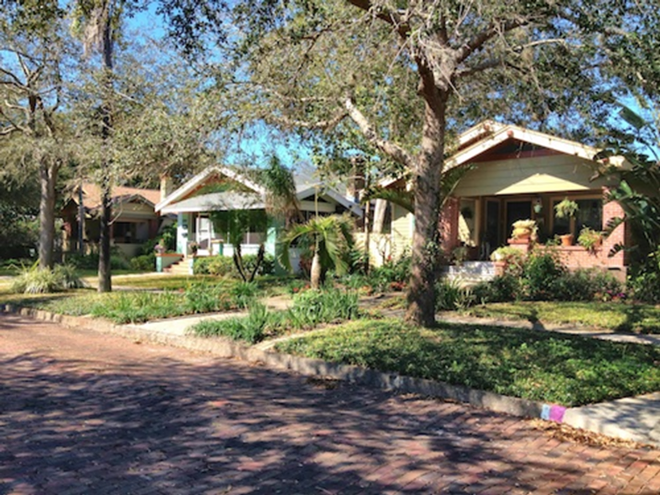
More than 200 people showed up to a public event space at Sunken Gardens Wednesday night to hear about proposed changes to the St. Petersburg's historic preservation ordinance, changes some worry will impose onerous restrictions on their property rights.
The crowded meeting was contentious at times, as residents heard about proposed rules that would make it easier for preservation advocates to apply for special historic designations for certain parts of town — neighborhoods like Kenwood and Old Northeast. The crowd seemed split on whether to support the changes. Quite a few in attendance were well-known preservation advocates who want to see the changes pass. But there were also many people who were concerned about the potential effect of such changes on property rights and values.
If updated, the ordinance would make it easier for a given neighborhood to support an application for historic status by reducing the numbers of votes required to approve such an application. Historic status (if approved by the city) establishes aesthetic guidelines on new construction and on modifications to existing properties, requirements that would ensure consistency of historic character from block to block. That's something preservationists and other proponents say has an obvious positive impact on property values, community identity and economic development.
The new rules would require approval by only a simple majority of people who actually vote on whether or not to apply in order to initiate the process. Currently, two-thirds of all property owners in a given area are required to approve the initiation of an application for historic status — in other words, people who don't cast a vote are counted as a no.
“If they're going to have a process like this it needs to be a process where it's at least obtainable,” said Bill Heyen, a Kenwood activist.
While there are five nationally designated historic areas in the city, there are only three that have been approved at the city level — Roser Park, Al Lang's Bungalow Court and Granada Terrace. The three are much smaller than Kenwood and Old Northeast, so it was probably easier to get a higher ratio of residents on board.
With a lower resident support threshold, some residents were concerned that a handful of preservation advocates could turn a large neighborhood into a historic district despite the wishes of their neighbors.
"I have a hard time with that," one attendee said.
The city's urban planning and historic preservation manager, Derek Kilborn, offered background and moderated the event. He explained, more than once, that the ordinance would just deal with initiation of the application process.
"There are several steps that that application would have to go through to get [historic status]," he said.
And once an application is filed, the city's Community Planning and Preservation Council has to give it a thumbs-up. After that, the full City Council has to deliberate on, then approve it. The public would have multiple opportunities to protest.
If scores of residents come out in opposition to an application that a dozen of their neighbors voted for, that'll be a consideration, Kilborn said, so it's probably pretty unlikely that such a designation would be achieved against the will of most affected residents.
For many in attendance, the debate over historic preservation came down to property rights.
"The bottom line is, we are simply turning our houses into these mini-museums at the behest of the regulations so that we comply," said Steve Lange, who said he's an architect who has worked with property owners in historically designated areas of the city. “How can you answer to us that you won't have more control over our houses than we do?”
Kilborn said while the city has to review proposed changes to the exterior of a home (if they're significant) in such a district — and new home designs, too — not every modification would require such a review.
"A change in paint color is something that does not require any staff review, or commission reviews. So there are things in there that we don't look at," he said. "But you're absolutely right. In a local historic district, properties are required to get a [certificate of appropriateness] for exterior modification."
City Council is slated to take up the changes to historic preservation policies at a workshop June 4 at 3 p.m., and will likely vote on them August 20 at a regular council meeting.

